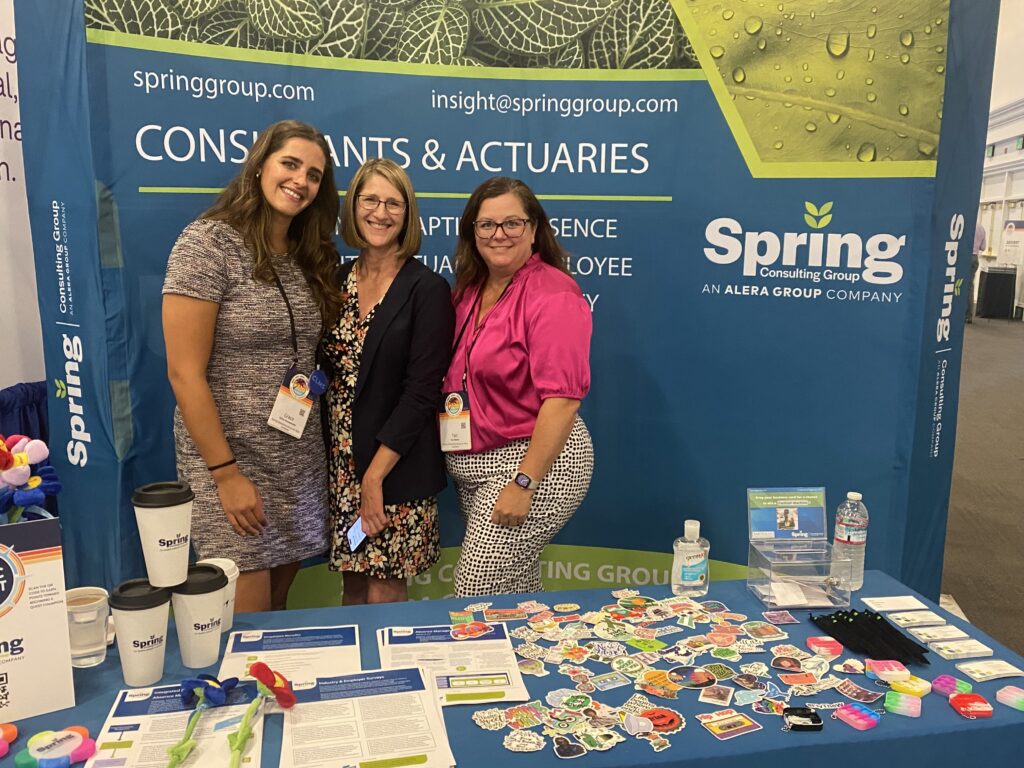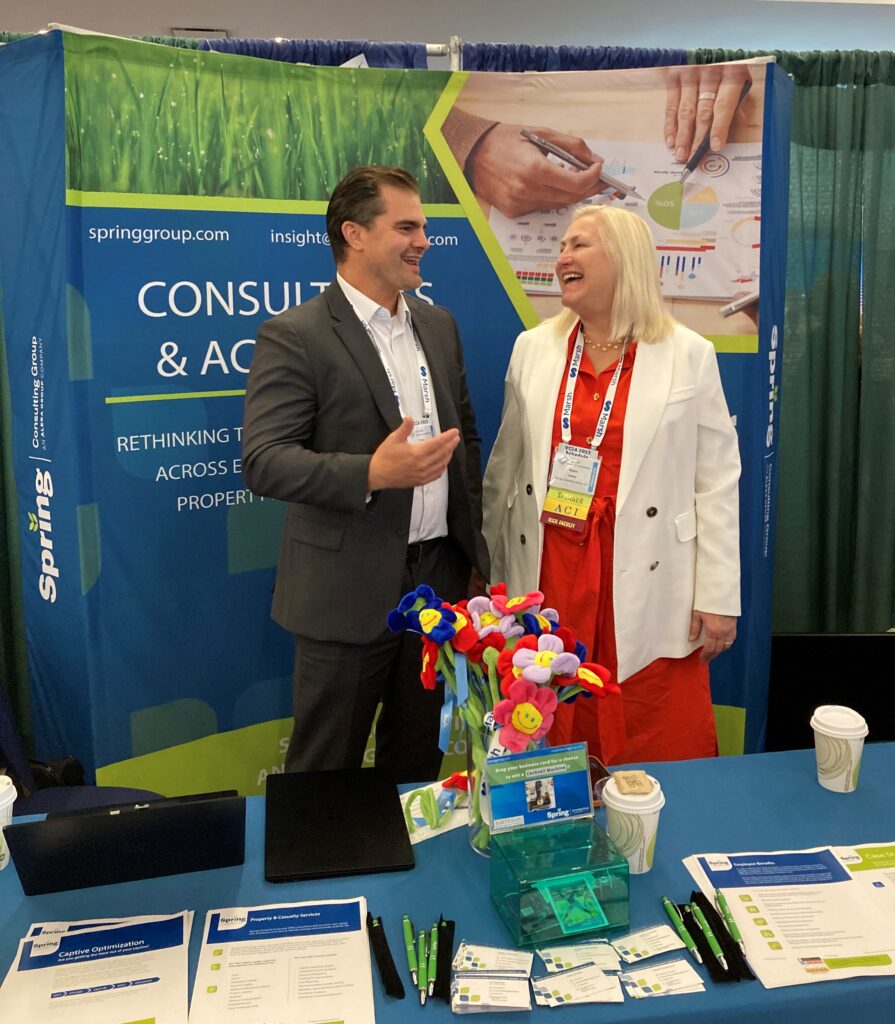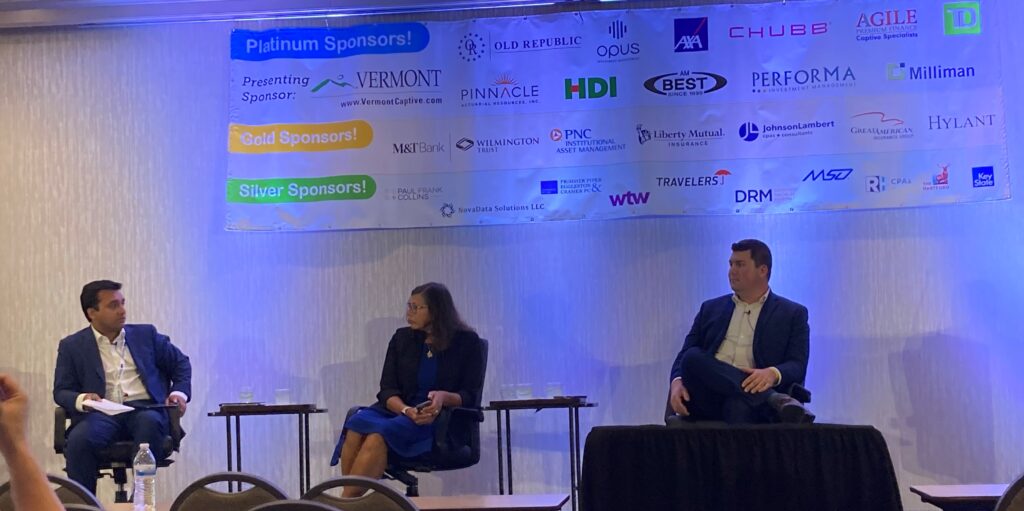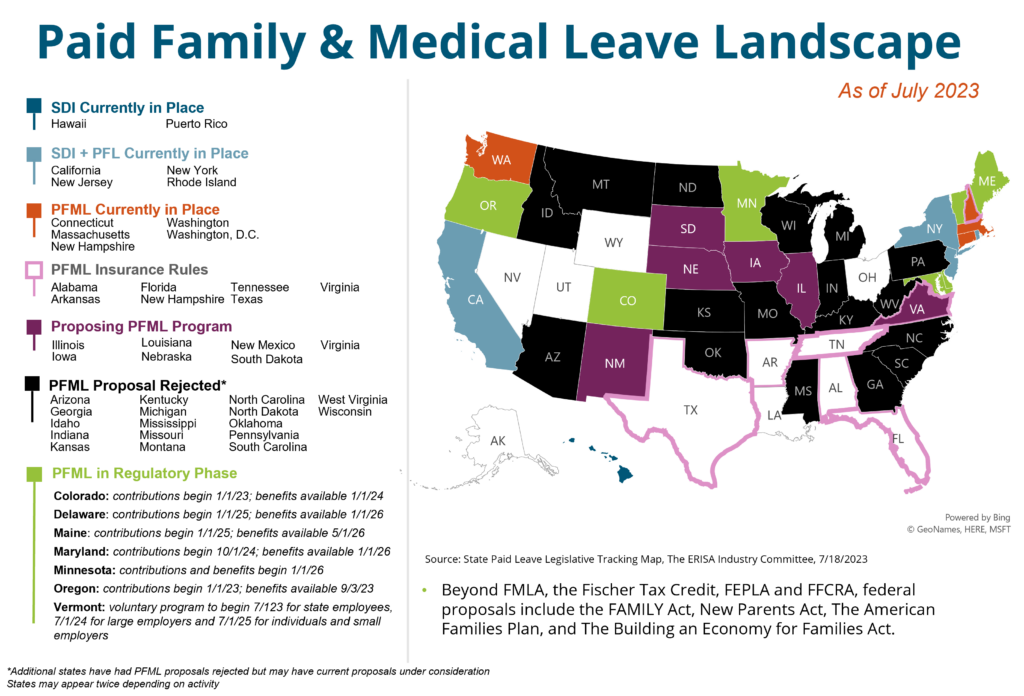Executive Summary
In the ever-evolving landscape of employee benefits, wellness solutions have emerged as a pivotal focus point for employers with a long-term view of health and productivity. Recognizing the vital link between a healthy workforce and organizational success, employers are redefining wellness programs to meet the diverse needs of their employees.
Employee wellness programs have undergone a remarkable transformation since the start of the pandemic. Once limited to in-person fitness challenges and generic health screenings, these programs have evolved into holistic initiatives that prioritize the everyday wellbeing of employees (both inside and outside of work). Employers are now taking a proactive approach, aiming to not only prevent health issues but also enhance employee engagement, productivity, and job satisfaction. In a survey conducted by Glassdoor, 60% of job seekers reported that benefits and perks are a significant factor in considering job offers. A robust wellness program signals an employer’s commitment to employee well-being, making the company an attractive destination for skilled professionals seeking an organization that values their health and work-life balance.
What is the impact on healthcare spending?
Investing in employee wellness is no longer a discretionary choice; it’s a strategic imperative. The cost of poor employee health is significant, leading to decreased productivity, increased absenteeism, and higher healthcare expenditures. According to Harvard researchers, every dollar spent on employee wellness yields a reduction in healthcare costs of $3.27 and a decrease of $2.73 in costs related to absenteeism1. A similar ROI study conducted by the International Foundation of Employee Benefit Plans determined that employers save between $1 and $3 on healthcare costs for every dollar spent on wellness initiatives.
These cost savings are from both direct and indirect triggers, and it’s important to also include more qualitative factors like retention and productivity when you look at the cost/reward analysis.
Point Solutions Overview
Employee wellness is an important yet broad and nuanced space. Over the last decade, we have seen a significant increase in point solutions dedicated to well-being outcomes, some of which include:
- Fitness Coaching, Apps and Trackers: Applications designed to support the physical health of employees.
- Wearable devices connected to apps that track steps, calories burned, and other indicators have grown in popularity.Team Challenges via apps, such as walking/biking challenges, are great tools to encourage healthy habits amongst dispersed workforces. Incentives can be used to boost participation.
- Digital fitness classes provide a library of specialized activities and workouts individuals can take advantage of to meet health goals.
- Nutrition/Weight Loss tools: Platforms that promote healthy eating and physical wellbeing practices.
- Dietary apps can provide an array of healthy recipes and record eating/snacking habits.
- Weight management platforms offer a range of tools including nutrition plans, weight trackers and virtual support.
- Personalized Apps: Tailored resources that provide personalized goal tracking, and virtual coaching.
- Smoking cessation tools and programs can help people track, reduce, and quit tobacco/nicotine consumption.
- Alcohol misuse programs allow individuals to access workshops, webinars, and other tools to reduce drinking.
- Mental Health Support Platforms: Offerings that focus on stress reduction, mindfulness, meditation, and access to mental health care.
- Sleep/meditation apps are being used to lessen stress, reduce anxiety and drive productivity.
- Digital therapy platforms are great for reaching out-of-state and international workers.
- Financial Wellness: Programs that provide tools for managing financial stress, planning for retirement, and addressing debt.
What should I do as an employer interested in wellness point solutions?
For committed employers, point solutions should be just one component of an overarching wellbeing strategy that takes into account the following:
- Assessing Current Health Trends: Analyze health data to identify prevalent health issues and trends within the employee population.
- Designing Tailored Solutions: Use this data to inform decisions around point solutions. It is rare the overcommitting to point solutions will produce the desired results; we recommend a more pointed approach. Craft an approach that addresses specific needs, encompassing physical, mental, and emotional well-being.
- Benchmarking and Surveys: Compare your offerings to industry standards and continually assess its effectiveness through employee feedback and measurable outcomes.
- Incorporating Cutting-Edge Technology: This is where point solutions come in; leverage technology and tools to provide engaging and accessible wellness resources, from wearable devices to wellness apps.
- Promote Inclusivity: Ensure that wellness solutions cater to a diverse workforce, taking into account geographic, cultural, and accessibility considerations.
The journey towards a healthier and more productive workforce begins with employers’ commitment to holistic wellness solutions. As employee needs evolve, so too must wellness programs. By embracing innovative models, tailoring benefits to specific needs, and fostering a culture of well-being, employers can embark on a transformative journey that not only enriches the lives of their employees but also contributes to the overall success of the organization. Wellness point solutions, if tackled thoughtfully, can be a tool in your toolbox to arrive at a healthier, happier, and more vibrant workforce.
1 https://www.bravowell.com/resources/do-wellness-programs-save-companies-money
Demand for new weight loss medications continues to rise and employers remain concerned about budget impacts if they decide to offer these costly medications as part of their benefit package. These medications, known as GLP-1 agonists have skyrocketed in popularity and are thought to be “miracle drugs” by many. The reality is that weight loss requires a multi-modal approach and not all people who use them will achieve significant weight loss. Studies have shown that once discontinued, patients gain an average two-thirds of the weight back1. The reality is there is no miracle cure, but these medications have helped to destigmatize obesity and make clear the benefits of taking a multi-faceted approach to sustain weight loss.
Employer Case Study
As is the case with many organizations, weight loss drug strategy was recently of particular interest to one of our clients, edHEALTH. The client was interested in the positive impacts yielded but was daunted by the complex dynamic of long-term cost versus benefit.
Spring assisted edHEALTH in assessing a best practice avenue for weight loss drugs, keeping in mind that spending on obesity-related conditions result in approximately a 12% increase in total healthcare costs2. Wegovy (semaglutide) has an average price of approximately $1,349 a month, or more than $15,000 annually. That is more than double what the Institute for Clinical and Economic Review (ICER)3, a private entity that provides an independent source of evidence review and creates cost-analysis reports, recommends, instead stating that Wegovy should be priced somewhere around $7,500–$9,800 per year to fall into the cost-effective threshold.
We worked with edHEALTH and its PBM partners to fully understand their weight loss medication utilization management and monitoring parameters. As a member consortium, edHEALTH is committed to providing their member institutions with the information needed to assist them in determining the best cost-management strategies. Therefore, a key part of our evaluation was to prioritize the education of staff and faculty on the protocols and side effects of these medications to potentially narrow the interest to those highly motivated groups. There is no one size fits all solution, but there are specific points of consideration and educational resources that can help organizations of any kind address this topic with stakeholders.
Additional recommendations included:
- Ensuring plan participants understand that treatment should extend beyond the medication
- A comprehensive approach is critical and ideally includes behavior-management coaching, nutrition support, an exercise plan, and accountability check-ins.
- Non-medication initiatives might include fitness reimbursements, nutrition programs like WW (formerly Weight Watchers), and/or employee walking challenges. Incentives should be woven into these programs.
- Reauthorization requirements with the PBM should be in place (approximately every 6 months) to confirm patients are receiving the expected positive response to therapy related to goals.
For example, edHEALTH hosts an annual walking challenge between member schools, with prizes and check-ins along the way. The healthy competition creates a simple yet effective way to get employees moving more than they might otherwise, and a tactic like this pairs nicely with an overarching weight loss strategy.
Considerations for Employers
Ultimately the choice to cover these medications is an organizational decision, but it’s critical to have all the information necessary to make this decision, starting with a robust view of your population demographics. With high rates of obesity for most health plan sponsors, a prudent and thoughtful approach to expanding weight-loss coverage will be required. Attempts like this to tackle the obesity epidemic could produce long-term savings with lower overall healthcare costs, prevention of progression of existing diseases, and most importantly a better quality of life and employee experience.
No matter your decision on offerings, the more you can offer through communications and education will help your plan participants make informed decisions and understand their role in achieving and keeping weight off. To realize tangible results, all parties must be committed.
Our clinical pharmacist and benefits consulting team is here to help you assess weight loss as a component of your benefits strategy, including not only weight loss drugs but also wellbeing initiatives and data analytics for monitoring success. Get in touch for assistance in navigating this nuanced and rapidly evolving area.
1 https://www.nbcnews.com/health/health-news/happens-stop-taking-wegovy-ozempic-many-people-regain-weight-rcna66282
2 https://www.hsph.harvard.edu/obesity-prevention-source/obesity-consequences/economic/
3 https://icer.org/news-insights/press-releases/icer-publishes-evidence-report-on-treatments-for-obesity-management/
Introduction
With employers being challenged with attraction and retention, employee benefits and perks take center stage. Many organizations are aware of the importance of benchmarking when it comes to the competitiveness and performance of an employee benefits program, but are unsure about how to get started or what programs to compare.
Benchmarking can be conducted across a range of offerings, but recently time off programs have been a significant area of interest for employees and employers, especially around parental and family leave. If your organization is considering changes to your program – or just looking to verify your time off programs remain competitive – benchmarking is critical.
Getting Started
No matter which benefit you want to benchmark, including time off programs, it’s important to set the stage before the number crunching phase. Start with:
- Confirm benchmarking objectives: be sure to establish what you want to accomplish and why. Think about what problem you are trying to solve, or question you are trying to answer. What specific outcomes can be associated with the metrics you are trying to highlight? You might want your benchmarking to inform how your program is performing so you can make the case for additional resources, or how your program is structured, so you can explain how it could be more competitive for attraction and retention.
- Determine how you will gather data: the more focused you can be in your efforts, the more expediently you can get to the results. This starts with deciding which programs you are going to benchmark and metrics you are going to compare. You will also want to confirm whether you are interested in:
- Internal benchmarking, where the comparison is made against your own data over time
- External benchmarking, where metrics or practices of your company are compared to one or many other companies
- Both internal and external benchmarking
External benchmarking is perhaps the more talked about path, but both can provide real value and insights based on what you are trying to achieve.
Digging In
When it comes to paid time off, policies worth evaluating might include:
- Vacation/Paid Time Off (PTO) or Flexible Time Off
- Sick Leave as a standalone offering vs. included in PTO
- Other types of leave, such as:
- Personal Leave
- Bereavement Leave
- Mental Health Days
- Volunteer Days
- Sabbatical
- Military Leave
- Parental Leave (birthing and bonding)
- Family Care Leave
When conducting external benchmarking to compare your leave benefits with those of other companies, you might be interested in analyzing the following categories:
- Accrual vs. front loading
- Duration by leave type
- Eligibility by leave type
- Percentage of pay by leave type
- Contribution methodology (e.g., perhaps you have employees in states with Paid Family and Medical Leave (PFML) laws)
- Equity across workforce demographics, for example:
- Leave tracking systems
- Variations based on employee status, tenure, and employee type or classification
It may also make sense to filter your evaluation by parameters like company size, location, industry, etc., so that you have as clean of a comparison as possible.
On internal benchmarks, it’s important to understand what’s actually happening in your population. Utilization data may be your best source of “benchmarking” related to time off programs. Work to understand when employees are using time, establishing patterns of behavior among different employee classes. Use this data to defend maintaining the status quo or making changes.
There are many ways in which you can slice and dice benchmarking data related to time off programs, and you don’t have to do it all. Always go back to your established goals and then work backward to identify which data sets will inform those objectives.
Industry Standards
We are constantly fielding questions around the competitiveness of leave offerings, particularly related to parental leave and PTO/vacation days. Data in this area is varied, but below are some statistics that can give you a gauge of norms.
- 82% of companies offer vacation or PTO1
- 11% of companies offer unlimited PTO (more common for large employers and those in the Information Management/IT sector)1
- Large employers (1,000+) tend to offer more time off compared to smaller companies1
- 51% of employers offer paid parental leave2
- 46.5% of employers offer paid family care leave2
- 40% of employers offer mental health days2
- 92% of employers offer sick leave2
- 66% of employers offer “other leaves of absence” like personal, bereavement, jury duty, and/or military leave2
Number of Time Off Days Given Based on Years of Service1
| New Hire | 1-5 Years of Services | 6-9 Years of Services | 10+ Years of Services | |
| PTO Bank | 0-10 days | 11-15 days | 11-20 days | 20+ days |
| Sick | 1-5 days | 1-5 days | 1-5 days | 1-5 days |
| Vacation | 0-10 days | 6-10 days | 11-15 days | 16-20 days |
| Personal | 0-5 days | 1-5 days | 1-5 days | 1-5 days |
Get in Touch
If you’re interested in benchmarking your benefits programs such as leave offerings, or are wondering how your programs stack up, Spring’s subject matter experts would love to hear from you.
1 Alera Group Healthcare & Employee Benefits Benchmarking Survey, 2022
2 Spring Consulting Group’s 2022 Integrated Employer Survey
As a mark to the end of summer, The Disability Management Employer Coalition (DMEC) hosted their Annual Conference in the beautiful (and beachy) San Diego! The conference is in a different city every year, and it was refreshing being by the water this time. DMEC is one of the leading organizations in the absence and paid leave landscape; their conference brings together stakeholders from all across the industry to connect and discuss trends and best practices.
Here are some buzzworthy topics I wanted to share from the conference:

1) Mental Health Support
Although the demand for employer support for mental health and wellbeing services may not be as high as it was during the COVID-19 pandemic, it remained a hot button topic at this year’s conference. As mental health support solidifies its place in the benefits industry, employers are looking at innovative ways to stand out and cut costs. Some related presentations I found insightful include:
-The very first session of the conference, “A Mental Health Culture Shift: Addressing It from the Top Down,” brought together representatives from multiple health systems to discuss the importance of developing mental health resources that work for employees of all levels.
– In the presentation, “The Echo Pandemic: Mental Health, Lost Time, and Benefits Spend,” the speaker reviewed the ROI impact of preventative wellbeing solutions on benefits spend and workplace culture.
– In a one-of-a-kind presentation, a licensed psychologist reviewed “Regulated Psychedelics for Mental Health & What You Need to Know.” As psychedelic therapies are expected to be approved in 2023-2024 for PTSD treatment, this session reviewed how this will impact employers and their mental health offerings.
2) Compliance Strategies
It seems like at every conference and event I attend, compliance is top of mind for employers across the nation. With shifting national, state, and local regulations, it can be difficult to stay compliant while satisfying a dispersed workforce. Here are some noteworthy sessions related to compliance:
– During my final session I was joined by industry experts to discuss “New Models for PFML: Education and Action.” We broke down various state programs, private versus state plans and considerations for PFML insurance policies under voluntary programs.
– Two compliance managers reviewed important cases when the DOL and EEOC disagreed with court decisions and how it eventually played out in their presentation, “Flip or Flop: When the Courts (and Regulations!) Disagree.”
– As mandatory paid sick and safe time (PSST) regulations continue to shift, presenters in the session “Time for a PTO Overhaul! Why the Legal Landscape Compels Us to Consider a Multi-bank Paid Time Off Structure,” discussed how to stay compliant while maintaining a single-bucket PTO approach.
3) Returning to the Office/WFH Approaches
As the worst of the pandemic echoes behind us, many employers are trying to revert to tradition and get people back in the office (or find some middle ground). Decisions made regarding this dynamic will lay the foundation for employee culture and how employers approach leave management. Below are some relevant presentations I wanted to highlight:
– Experts discussed “Transitional Return-to-Work Programs that Last,” this included the cost benefits of these programs and tactics to educate and motivate front-line managers.
– A representative from Headversity, provided tips and resources to help empower future generations of women leaders. This included addressing accommodations that support the work-life balance of female employees.
4) Leveraging Tech
Tech in the absence and disability space continues to evolve with the introduction of new innovations and tools that can help create efficiencies and drive best practices. Even building on existing tools and systems can help us better understand current patterns and trends. Here are some presentations I found most insightful:
– In an interactive session with DMEC’s CEO, Terri Rhodes, Spring’s Jackie Myers and me, the attendees engaged in DMEC Benchmarking Jeopardy, which spotlighted DMEC’s new benchmarking platform that Spring helped build, which will give users an easy and user-friendly way to compare and contrast absence management policies and procedures.
– My colleague Marcy Updike and I reviewed survey data that analyzed the monetary value of flexible time off programs and their potential impact on recruiting and retention during our session, “The Value of Workforce Flexibility: Impact & Tradeoffs.
– Representatives from three different absence software companies discussed “Key Considerations for Selecting & Implementing Software as a Solution.” They reviewed employee considerations for implementing absence software and tips for managing day-to-day operations.

As a regular attendee and partner of DMEC, I have to say this may have been my favorite destination to date! As we approach the end of summer, it was great enjoying a few days of sunny weather. Throughout the busy few days, the Spring team and I had a great time reconnecting with industry leaders and deepening our knowledge of innovations in the leave management space. We are excited to see what next year’s conference has in store for us!
In Captive Intelligence’s latest Global Captive Podcast episode (#91), our Vice President, TJ Scherer shares details about his new role at Spring and reviews his experience in the captive and P&C arena.
At the end of 2022, Vermont became the largest captive domicile globally with 639 active captive insurance companies. So, it was only fitting that the Vermont Captive Insurance Association (VCIA) had one of the biggest turnouts this year at their annual conference, which brings together insurers and reinsurers, captive owners and risk managers, regulators and other industry professionals to network and discuss current trends in the industry. This year the Spring team and I had the pleasure of once again exhibiting and speaking at the conference in beautiful Burlington, Vermont. Below are some of the topics that took the spotlight.

1) Managing economic fluctuation
From groceries to rent it seems like nobody can avoid inflation, which is no different in the captive insurance and risk management sectors. Due to increased claims, stricter underwriting and high healthcare costs, many employers are looking into alternative risk financing options to stretch the dollar. Below are some of the sessions from VCIA I found most pertinent when addressing the economic landscape.
– In a session titled “The Economic Landscape & Your Captive’s Investment Portfolio,” speakers reviewed how interest rates, inflation, and other economic indicators have changed the captive industry post-COVID.
– The session “Impact of Inflation on Your Captive” reviewed how rising inflation and supply chain interruptions are impacting the captive industry, and what we can expect moving forward.
2) Pitching captive insurance
Although captive insurance can increase savings, reduce risk, and lead to investment opportunities, C-suite and other stakeholders may be hesitant due to resources and risk. No matter how efficiently a captive program is designed, it can’t be maximized without buy-in from all parties. Here are some presentations I found most insightful on boosting communication.
– Two captive board members and a consultant presented on “Innovative Ways to Fire-Up Your Board,” where they provided tools and tactics to boost some life and creativity into captive board meetings.
– My colleague, Karin Landry was accompanied by a captive owner and a tax auditor to discuss the need for strong communication amongst risk managers, captive owners, board(s) and other parties to ensure the captive remains successful. The session included a list of recommended Key Performance Indicators (KPIs) for risk managers to have as a tool in their toolbox when illustrating captive performance to other stakeholders.
3) A look forward
In just the past half decade we’ve seen drastic developments globally including devastating climate events, a widespread pandemic and war spreading overseas. These events remind us that there are always factors beyond our control that can complicate established best practices, but VCIA speakers gave their views on what’s to come.
a) Prepping the next gen
As an annual attendee at VCIA it was great to see the sheer number of new faces and developing talent at the conference. This year VCIA made sure to include an array of introductory level sessions designed to solidify foundational captive knowledge for those entering the industry. Some of the sessions I found most intriguing include:
– A two-part session titled “(The) Newcomer’s Guide to the Captive Industry” brought emerging leaders together to express their unique experiences in the captive space and tips for others entering into captives for the first time.
– In an interactive discussion group on “Building Talent in the Captive Industry,” industry leaders discussed major workplace challenges and tactics for building a strong talent base that will one day drive the future of the industry.
b) The future of captive insurance
Although often thought of as a traditional sector, we continue to see innovative approaches to risk financing across employee benefits and P&C. Here are forward-looking presentations I found interesting.
– A captive owner and business professional explored recent innovations and solutions in the ‘captive insurance laboratory’ during their session, “Where Will Captives Go Next? The Latest Uses for Captives.”
– One group of speakers took an interesting approach and spoke on “Leveraging New Tech and Data Visualization Tools for Captives.” They reviewed how various stakeholders can utilize tech to bolster actuarial analyses and efficient decision-making.

As a regular VCIA attendee, I found this conference to be the most fun to date. Aside from all the happy hours, free giveaways and tasty meals, I had a great time reconnecting with industry leaders and deepening my knowledge of captives. On behalf of Spring, my colleagues and I enjoyed the opportunity to exhibit and look forward to next year’s conference. Lastly, I had the pleasure of being accompanied by a captive owner and stop loss carrier to present on risk management strategies that are impacting employer-sponsored health plans and the rising costs associated.
This year during the Vermont Captive Insurance Association (VCIA)’s 2023 Annual Conference, our Managing Partner, Karin Landry shared her insights on top risk financing communication strategies for CFOs and other executives. Check out Business Insurance’s recap here.
As pharmacy and prescription drugs continue to drive healthcare costs for employers. Many are reevaluating their Pharmacy Benefit Manager (PBM) arrangement to ensure transparency, strategic alignment, and fair pricing. Click here to access our Q&A and generate your PBM Report Card.
It has been 30 years since the Family and Medical Leave Act (FMLA) was passed at the federal level under former President Bill Clinton. FMLA grants eligible employees with unpaid, job-protected leave for qualifying family and medical reasons with continued employer-sponsored group health insurance coverage, if applicable. Since then, some adjustments to FMLA have been made, such as the inclusion of workers with a family member in the military and those in a legal, same-sex marriage. However, the evolution has been slow and limited; many believed or at least hoped that over time FMLA would evolve into a paid leave model, but over the last three decades, it is states that have taken initiative in establishing PFML programs for their workers.

Starting with California in 2004, 11 states and Washington, D.C. now have some type of established PFML program, with several other states including Maryland, Colorado, and, most recently, Minnesota, in the regulatory phase where a law has passed but benefits are not yet available. Plans vary by percentage of wage replacement, maximum weekly benefits, the contribution split between employer and employee, benefit duration, and other factors. The newest trend in PFML law, however, relates to PFML as an insured product.
PFML Insurance Rules
Recently, states including Virginia, Tennessee, Florida, and Alabama have passed legislation related to a voluntary PFML insurance product, as opposed to the more traditional, mandatory PFML programs that we had been seeing in previous years. With this new model, state laws create a new line of family leave insurance that may be written as an amendment or rider to a group disability income insurance policy, or as a separate group insurance policy purchased by an employer.1 Employers may offer the product for their employees without obligation to do so, in a setup similar to other voluntary benefits like short-term disability or vision insurance. In this way, it is purchased through an employer but at the individual’s expense and discretion and a third party insurance carrier is used to carry out the program.
As an example, under the Tennessee Paid Family Leave Insurance Act, a new line of insurance called paid family leave (PFL) insurance has been established. It can be offered as a rider or included in a policy for short-term disability, life insurance, or as a standalone PFL policy. Qualifying reasons for a leave of absence include the birth or adoption of a child, placement of a child for foster care, care for a family member with a serious health condition, and reasons related to a family member’s active military duty. The insurance is purchased through an employer arrangement, but unlike the voluntary program launched this year in New Hampshire, there are no tax incentives for employers who offer the PFL product.
Preliminary Results
PFML as an insurance product is a new concept that we expect to evolve over time.
Take-up by employers will likely vary on their size, culture, geographic spread, and most importantly their current benefit offerings. Some employers may appreciate the model law as a guide to providing a new benefit for employees, or a competitive benefit to what is offered in other states so that equity could be achieved across locations. Others could feel it is too costly for them to offer, or they may already have equivalent benefits in place. Whatever the case, employees are becoming increasingly aware of these laws, and employers need to be ready to explain why they are or are not supporting them.
At the state level, it may be an intermediary step to the establishment of a mandatory PFML program, or it may be a way of offering some benefit without the budgetary and resource constraints required to build out a more traditional plan.
This new wave of PFML laws is just getting started, however, and our team will be closely monitoring utilization and legislative developments. In the meantime, check out our absence management services here or get in touch with our team if you have questions about the direction of PFML.
1 (2023). Absence Advisory June 2023. Aflac